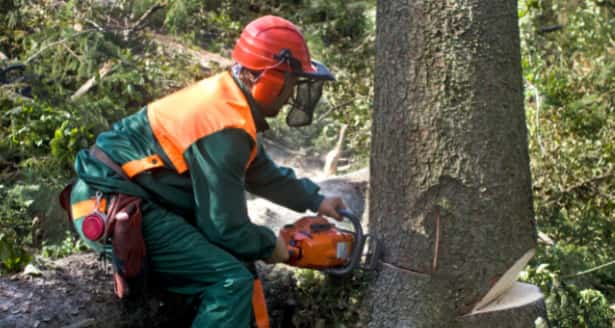Introduction: Tree surgery, the practice of caring for trees to ensure their health and safety, is a well-known field of arboriculture. However, trees offer more than just shade, oxygen, and aesthetic beauty. They have also played a crucial role in human history for their ability to provide natural dyes. In this blog post, brought to you by Linton Tree Surgeons, we will explore the fascinating connection between tree surgery and the production of natural dyes derived from trees.
The Historical Significance of Natural Tree Dyes
For centuries, humans have used natural dyes sourced from various parts of trees, such as bark, leaves, and roots, to colour textiles, leather, and even artwork. These natural dyes have been an integral part of cultures worldwide, offering a sustainable and environmentally friendly way to add colour to various materials. Here are a few examples of tree-based dyes:
- Madder Root: Madder, a plant often found near the roots of trees, has been used as a red dye for thousands of years. The roots of the madder plant contain a compound called alizarin, which produces a rich and lasting red colour.
- Oak Galls: Oak trees are home to various insects, including gall wasps. These insects create galls, or abnormal growths, on oak leaves and twigs. When crushed and fermented, these galls produce a deep black dye known as oak gall ink, used for centuries in calligraphy and manuscript illumination.
- Walnut Hulls: The hulls of black walnuts can be used to create a brown dye that ranges from light tan to deep brown. This natural dye has been employed for dyeing fabrics and colouring wood.
- Alder Bark: Alder trees have been a source of orange and red dyes from the inner bark. These dyes have been used to colour wool and other textiles.
Tree Surgery and Sustainable Dye Production
The connection between tree surgery and natural dyes lies in the responsible and sustainable management of trees. Proper tree care, including pruning, thinning, and removal of dead or diseased branches, contributes to trees’ overall health and vitality. This, in turn, promotes the sustainable growth of trees and the availability of materials for natural dye production.
Sustainability is a key aspect of tree surgery, as it ensures the long-term health of trees and the ecosystems they support. When trees are pruned and cared for responsibly, they continue to thrive, producing the bark, leaves, and other materials needed for natural dye production.
The Importance of Conservation
As we explore the use of trees for natural dyes, it is essential to emphasise the importance of conservation. Many tree species face deforestation, habitat loss, and climate change threats. It is crucial to practice responsible tree surgery and preserve species that have historical and cultural significance in natural dye production.
Conclusion: Tree surgery goes beyond just maintaining the health and safety of trees; it also has historical and cultural connections to the production of natural dyes. By practising responsible tree care and conservation, we can continue to enjoy the benefits of trees while preserving their historical and ecological significance in the world of natural dyes.
Call us on: 01223 919 495
Click here to find out more about Linton Tree Surgeons
Click here to complete our contact form and see how we can help with your tree’s needs.

